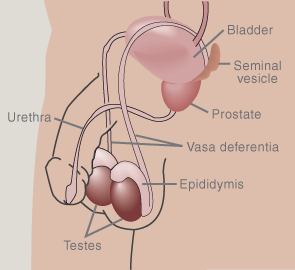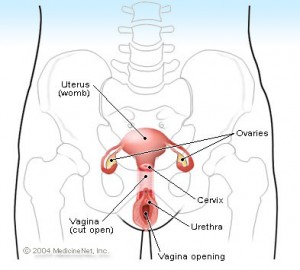What is Urethra?
Page Contents
- 1 What is Urethra?
- 2 Urethra Definition
- 3 Urethra Anatomy
- 4 Urethra Histology
- 5 Urethra Function
- 6 Urethra Location
- 7 Urethra and Ureter
- 8 Urethra Vas Deferens
- 9 Urethra Pain
- 10 Prostatic Urethra
- 11 Urethral Problems
- 12 Sore Urethra
- 13 Urethral Cancer
- 14 Urethra Tumor
- 15 Urethral Cyst
- 16 Urethra Blockage
- 17 Prolapsed Urethra
- 18 Burning Urethra
- 19 Stricture Urethra
- 20 Sounding Urethra
- 21 Urethra Pictures
The urethra is the opening that allows the urine to be discharged from the urinary bladder. It is due to the presence of the urethra tube that we can expel the urine from our body. It is a tube that connects the bladder to the genitals to allow the expulsion of urine. It has sphincter muscles that allow the urine to stay in the bladder till it is expelled out. The sphincter muscle expands and contracts to allow the excretion and storage of urine.
Urethra Definition
Urethra is a small duct that releases urine from the bladder to the outside of the body, through the genitals, i.e. the penis in males and the vagina in women.
Urethra Anatomy
There are certain structural differences between male and female urethra.
Female Urethra
The female urethra is about 1.5 to 2 (about 35 mm) inches long. It is located posterior to the pubic symphysis and is situated in the front wall of the vagina. The urethra is slightly curved and is directed in the forward direction. It is a membranous canal made up of the following three layers:
- Muscular layer – this is the continuation of the muscular layer of the urinary bladder.
- Mucous layer – this layer is also continuous with that of the bladder. It is lined with laminated epithelium.
- Spongy erectile tissues – It is a thin layer that is made up of the spongy epithelial tissues, which includes plexus of veins and smooth muscle fibers.
The urethra is surrounded by the urethral sphincter, which gets its supply from the pudendal nerve. The female urethra ends at the external orifice of urethra. The structure of the female urethra is simpler than that of the male urethra, for the fact that female urethra carries only urine, unlike the male urethra which is designed to carry both urine and semen.
Male Urethra
The male urethra is 8 to 9 inches (200mm) long. It is in the shape of a tube. Its prostatic section is arched in shape. The male urethra is longer than the female one, as it has an additional reproductive function to perform along with the excretion of urine. It is concerned with the conveyance of semen out of the body at the time of ejaculation.
The male urethra is divided into three parts:
- The Prostatic urethra – The prostatic part of the urethra is the widest and the most dilatable part of the urethra that begins at the neck of the bladder and continues through the prostrate gland.
- Membranous urethra – this is the shortest and a very narrow part of the male urethra. It passes through the urogenital diaphragm. It is here that the sphincter is located that controls the storage and expulsion of urine from the bladder.
- Spongy urethra – it is the longest of the three sections, being approximately 6 inches in length. It extends from the end of the membranous portion, continuous through the penis and ends at the external orifice of the urethra. At this point, the urine leaves the body.
The ejaculation of semen takes place from the urethra itself, and this is the reason that the structure of the male urethra is more complicated than the female one.
Urethra Histology
When the urethra exits the bladder, initially it starts off as transitional cells. As it continues, stratified columnar cells and stratified squamous cells enter the urethral orifice. All through the urethral glands there are mucus secreting glands. These mucous secreting glands protect the epithelium from corrosive urine. The walls of urethra are smooth muscle.
Urethra Function
The most important function of urethra is to expel urine from the body. This seems a very easy function, but it requires a lot of effort. The levator ani muscles in the pelvic floor controls urination in the humans. This muscle is a very weak muscle, especially in females as they may be damaged at the time of childbirth. In males, the urethra is longer. This is to allow the passage of semen along with the urine, at the time of ejaculation. This is the reason that the male urethra passes through the prostate gland.
Urethra Location
The urethra is located below the bladder. It is located on the pelvic floor cavity. It is located in front of the rectum in males, and anterior to the uterus in females, in the upper vaginal region.
Urethra and Ureter
The ureter is a tube which connects the kidney to the bladder so as to allow the transportation of urine from the kidney to the bladder. The urethra connects the bladder to the genitals. Both these ducts are concerned with the transportation of urine.
Urethra Vas Deferens
The vas deferens is the ducts that transfer sperms from the epididymis so that ejaculation can take place. It transfers sperms to the urethra to prepare it for ejaculation.
Urethra Pain
Urethral pain is a serious symptom, as it may indicate the occurrence of some severe disorder in the urinary tract and the reproductive organs. This pain can be mild, severe or acute. This pain can be due to an infection or due to any kind of blockage in the urinary tract. This pain can also occur due to the inflammation of the urethra.
If someone experiences pain during the discharge of urine, then the reason is definitely the inflammation of the urethra, a condition called Urethritis. Sometimes, these diseases may also be accompanied by symptoms such as that of the swollen urethra. Urethral pain should be immediately diagnosed so as to find out the cause behind it and its treatment.
Generally, pain in urethra is considered to be a symptom for the following diseases:
- Gonorrhea
- Urethritis
- Obstructive Uropathy
- Urinary tract infections
- Chlamydia
- Enlarged prostrate
- Kidney stones
- Prostatis
Prostatic Urethra
This is the widest part of the urethra. It measures about 3 cm in length. This is the most dilatable part of the urethral canal. It is a part of the male urethra.
Urethral Problems
Some of the problems that occur in the urethra are:
Urethral Syndrome
A condition characterized by frequent urge of urination, without any bacterial agent as its cause. This kind or disorder can be cured well with the help of certain low grade antibiotics.
Urethrism
If you are experiencing spasms in your sphincter muscles, then the condition that you are undergoing if definitely urethrism. This condition is not so severe and it cures on its own within a day or two. You should consume plenty of fluids so as to keep yourself dehydrated.
Urethritis
Urethritis is a condition which occurs due to inflamed urethra. It results in the discharge of a thick fluid from the urethra. It may result due to goncoccal infection.
Sore Urethra
It is a urethral disorder that may result in the formation of a number of diseases. When the urethra gets sore, it in turn brings along with it, a host of other related problems. Genital herpes is a disease which indicates itself through a sore urethra.
Urethral Cancer
The cancer located in the urethra, in which malignant cells form in the urethra, is known as urethral cancer. This is a rare disease, more common in females than males. The symptoms of this cancer include bleeding from urethra, interruption in the flow of urine and discharge occurring from the urethra. It should be treated through open excision surgery or laser surgery.
Urethra Tumor
Urethral tumors are yet another rare occurrence. They show symptoms of Haematuria, proteinuria and urinalysis. It can be diagnosed through biopsy, and be treated through Chemotherapy.
Urethral Cyst
Sometimes there may be formation of cysts in the urethra. These cysts are the clogging in the urethral region.
Urethra Blockage
The ureter and the kidney meet at a point called the Uteropelvic junction. If there is a blockage at this junction, it leads to the swelling of the kidney. There is a disease called acute bilateral obstructive uropathy. This leads to blockage in the flow of urine.
Prolapsed Urethra
Prolapsed urethra is a medical condition which is the result of damage to the muscle tissues in the pelvis, due to which the surrounding tissues begin to sag down to the vagina. It is officially known as the Urethrocele. It is a circular protrusion of the urethra that occurs through the external meatus. The most common symptom of this disease is vaginal bleeding. It may be treated through medical therapy.
Burning Urethra
Some people may experience a burning sensation in the urethra due to various diseases in the urethra, or some sexually transmitted disorders. Sometimes, urethral pain may alos result in a burning sensation in the urethra.
Stricture Urethra
It is a condition which is characterized by an abnormal narrowing of urethra. It may be caused due to inflammation of the urethra. It may be due to the inflammation of the scar tissue due to surgery or injury. This kind of condition may also be caused due to the pressure if a tumor that may have occurred in the urethra.
These strictures are congenital when they occur in the bulbar urethra, particularly between the proximal 1/3 region and the distal 2/3 region of the bulb. Since it does not grow with the urethra, it is not noticeable after a certain period, and its negative effect is restricted to the impediment of urine only.
Sounding Urethra
Urethral sounding is the act of medically using probes or objects so as to increase the inner width of the urethra, to enable the location of obstructions in it. These sounds are also used in the act of urethra stretch, whereby the urethra is stretched so as to receive piercing. Urethral sounding is also used to describe an act that is practiced in sexual intercourse.
Urethral sounding is a very risky act, for if this act of not carried out carefully; it can cause damage to the urethra. It may cause urethra irritation, infection in the urinary tract, and even tearing of the urethra in extreme cases.
Urethra Pictures
You can have a look at the images of urethra, to see its basic anatomy and its structure.

Picture 1 – Male Urethra
Source – malecontraceptives

Picture 2 – Female Urethra
Source – medicinenet
Urethral problems should be diagnosed and treated, so that you there are no problems in your urinary tract. The urethra is a very important excretory organ. Therefore you should take measures to treat the disorders.
